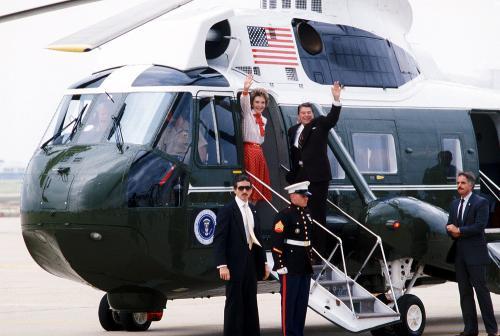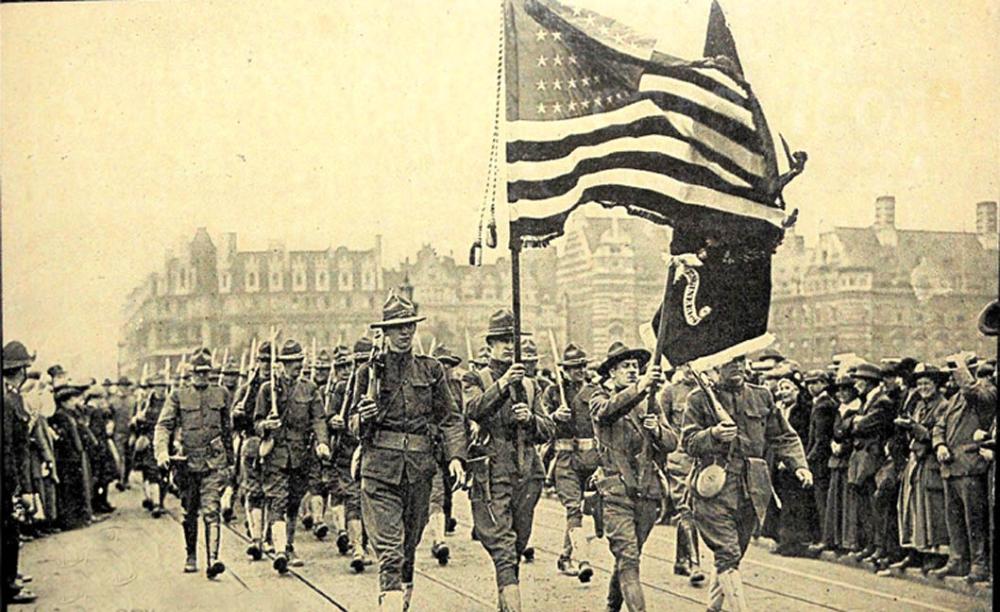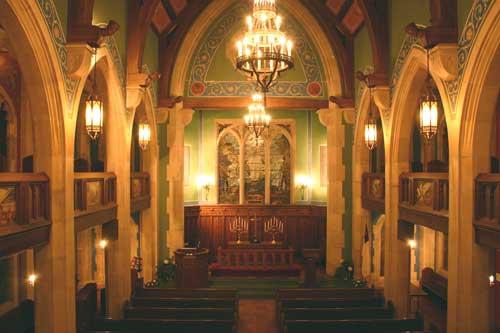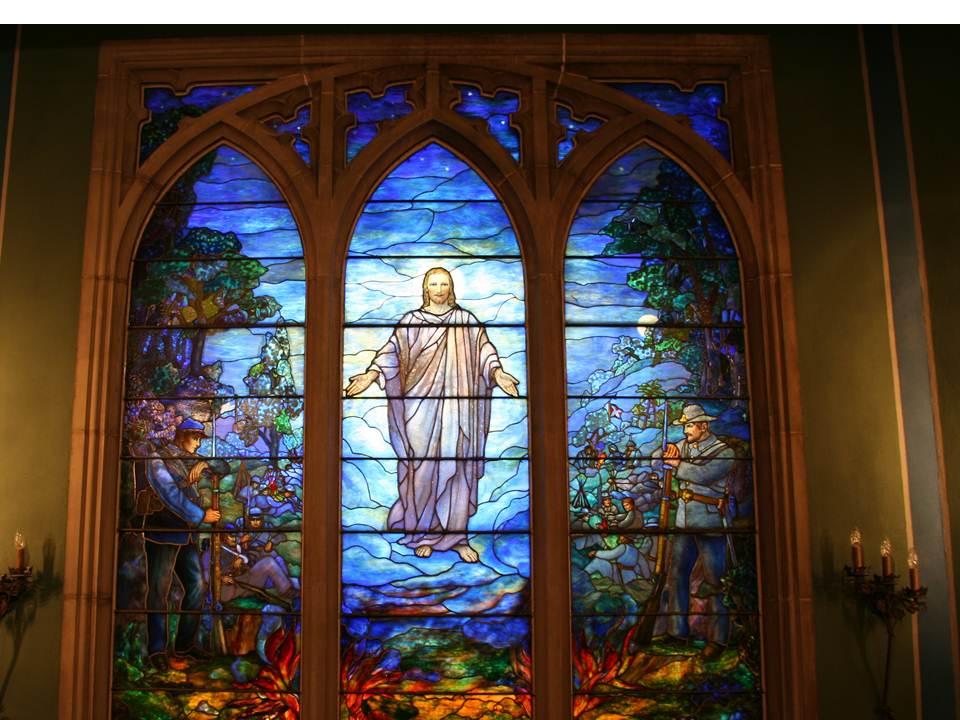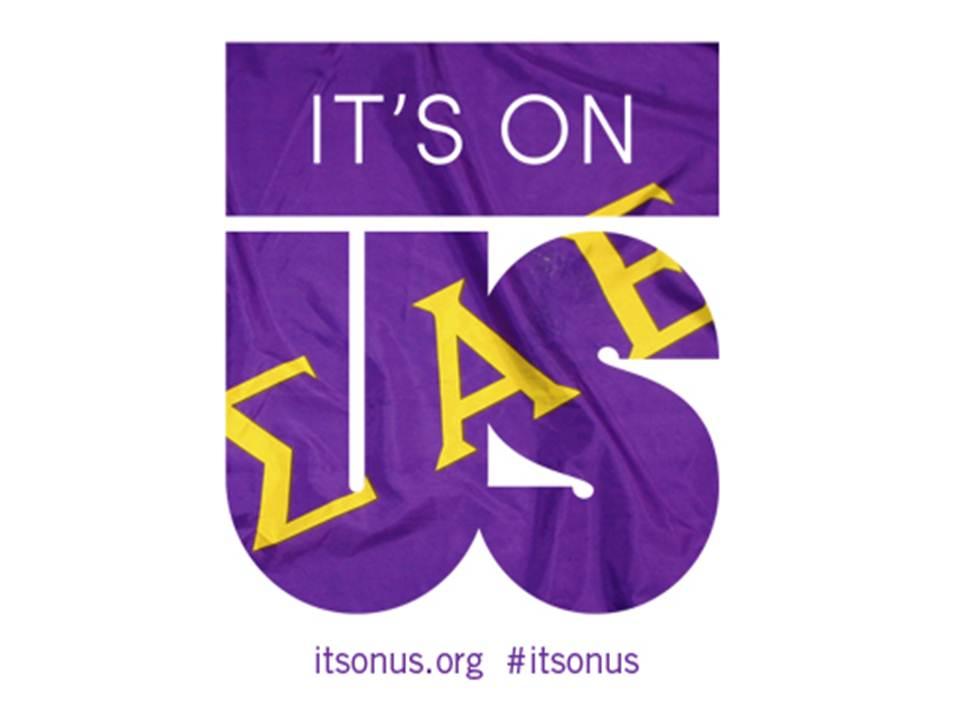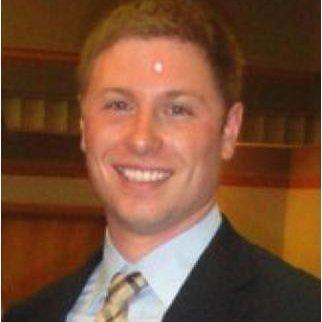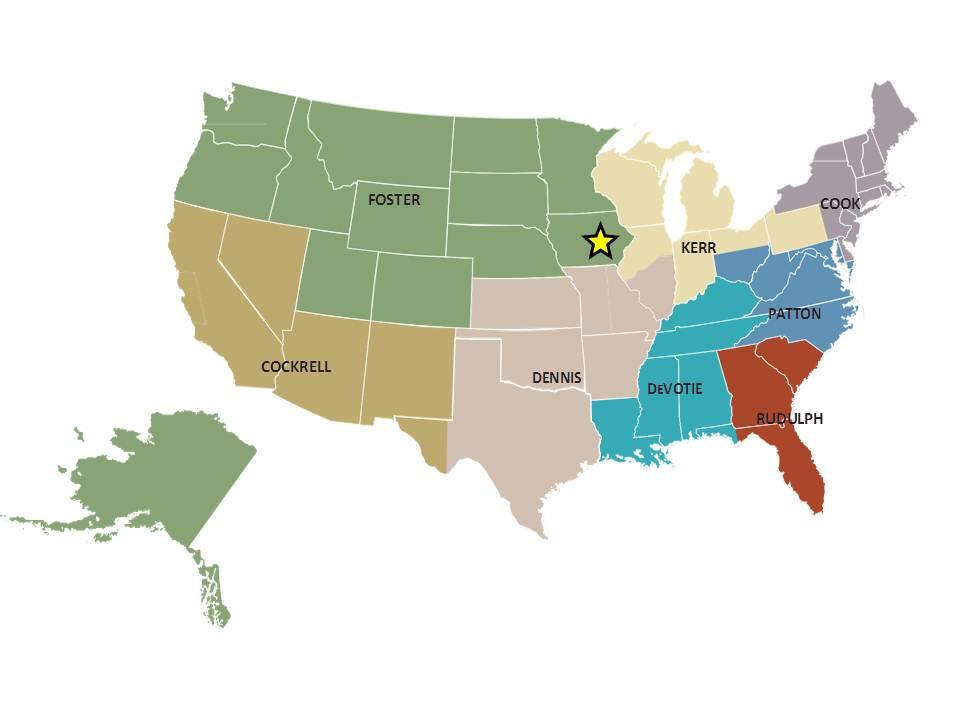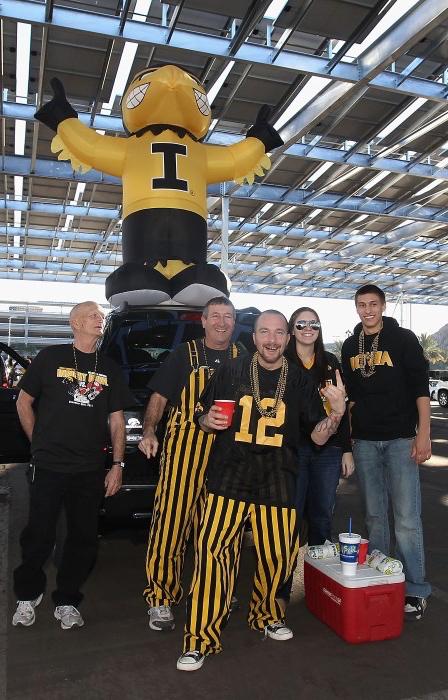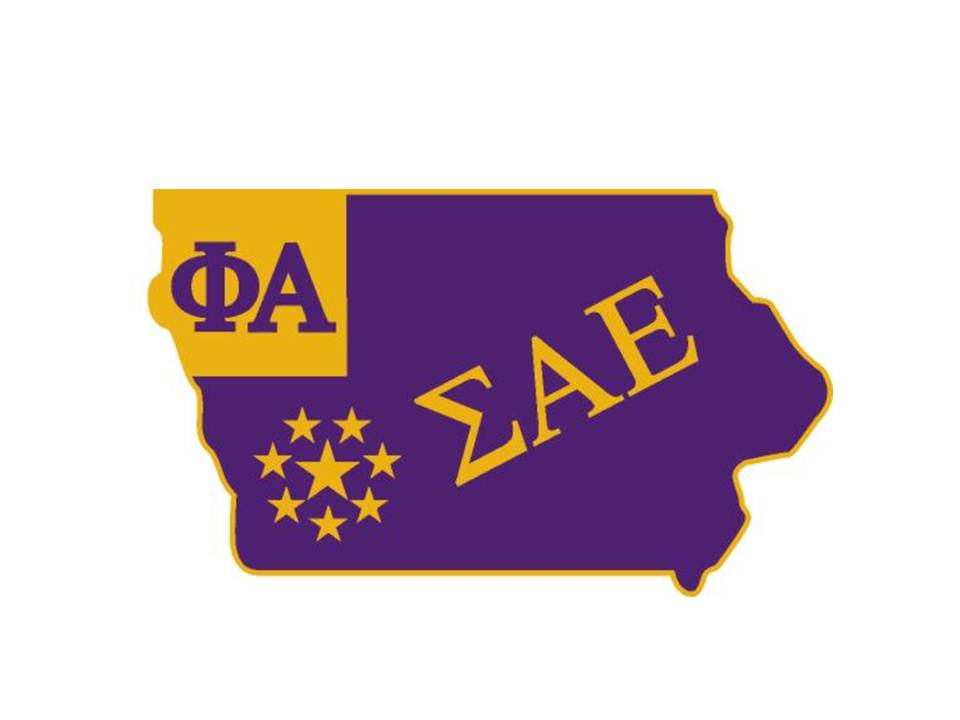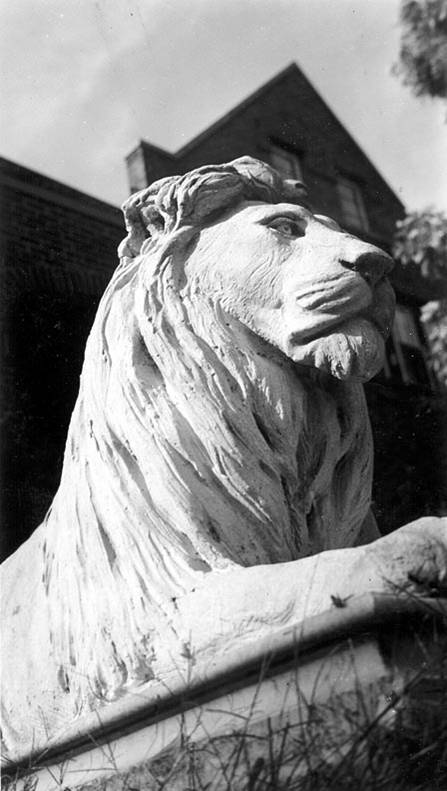Brotherhood, country, state; Vander Linden's lifetime true example of service and leadership
What do you call a man who has had a multitude of titles in his storied life? He’s an SAE, do you call him brother? He has served in the U.S. Marines Corps, do you call him General? He serves in the Iowa legislature, do you call him State Rep? How should you address him?
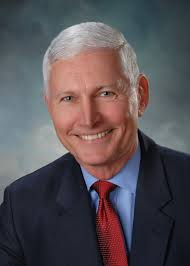
Vander Linden was born on April 6, 1948 in Oskaloosa, Iowa, a town of 10,000 people eighty-seven miles southwest of Iowa City. Vander Linden graduated from Oskaloosa High School and always had his eyes set on being a Hawkeye. He pledged the Iowa Beta chapter of Sigma Alpha Epsilon and was initiated into the fraternity on March 5, 1967. He received badge number 131169.
“There are a remarkable number of Oskaloosans who joined SAE at Iowa going way back to the 1940s,” he said, “but the only guy I ever knew who pledged SAE there was a cousin of mine, Jerry Adey (IABE ’56) . So I had SAE in the back of my mind before I went through rush. During Rush Week, I was not disappointed. I thought SAE had a great bunch of guys and it turned out to be a great experience for the next four years.”
Vander Linden said when he stepped onto the Iowa campus he had many a man’s vision of being a doctor.
“That didn’t work out after about the first semester,” he laughed.
Vander Linden majored in political science and had a minor in history. He was drawn to political science because of another pledge brother. And the major seemed to work harmoniously with his decision to join the Marines.

“I never intended to use political science or history in a professional capacity,” he said. “I just kind of blundered into it, frankly.”
The Marine Corps had a program called the Platoon Leaders Class (PLC) program, which required attending a summer camp for six weeks each in Quantico, Virginia.
“I always wanted to be a Marine, so this worked out,” Vander Linden said. “I went to the summer camp after my freshmen and junior years. At the time, Vietnam was happening and young men had to make a decision sooner or later on how they were going to serve. It wasn’t until my senior year that the lottery came out.”
Vander Linden had several fraternity brothers he was close to including Bob Holley (IABE '70), who was his roommate for several semesters, as well as John Rodehorst (IABE '69), with whom he hung out frequently. Mike Dennis (IABE '70) was a pledge brother and Dave Gidel (IABE '70) was a good friend.
"I pretty much lost track of most of the guys,” Vander Linden said. “The only guy I had contact with since Iowa Beta days is a guy named Bill Lannom (IABE ’67). He was a couple of years ahead of me and he went into the Navy. He was in Washington D.C. the same time I was getting trained at Quantico. We got together quite a bit and I have seen him a few times since them. He has moved back to Iowa, too.”
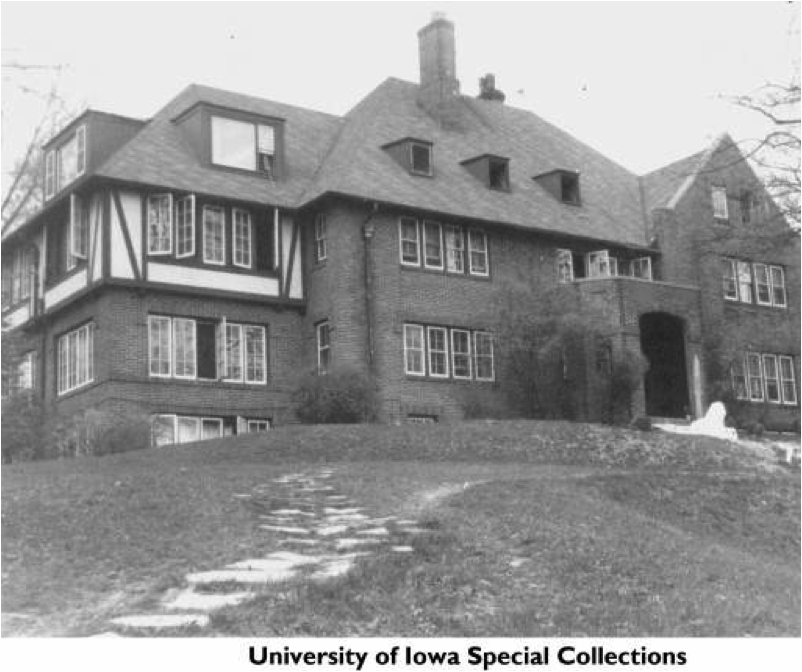
He said the upper class men during his time at Iowa had a positive impact on his life.
“I can remember the first officers’ election meeting we had after I became an active,” he said. “ Tony Renzo (IABE ’68) was up for EA and Dan Randa (IABE ’68) was the EDA. I learned a lot about when to talk and when to keep your mouth shut. Since I was a freshman, I was keeping my mouth shut. But I watched these guys work the campaign until they got Renzo elected. I talked to Randa after the meeting and I learned lot from him as well as others. They taught me how to listen for cues and when to influence people at the right time."
Vander Linden was able to exude his military instincts early in his SAE life.
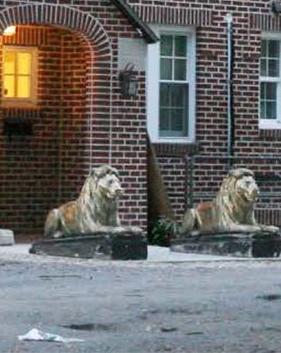
“When I was a pledge, we got wind that the Phi Psi pledge class was going to sneak attack after dark and paint the SAE lions,” he said. “In the meantime, we made a lot of preparations. We had the floodlights all set up and we were just sitting there waiting for their arrival. Sure enough, here they came through the leaves right up that big hill. They found themselves right in the teeth of our defenses. We threw 20 dozen eggs, water and gave them a fight! It was not their finest hour but we had a great time! They never got to the Lions!”
Vander Linden, a graduate of the 34th Leadership School, held at the Levere Memorial Temple in Evanston, Ill, went back two years later and served on the Leadership School faculty.
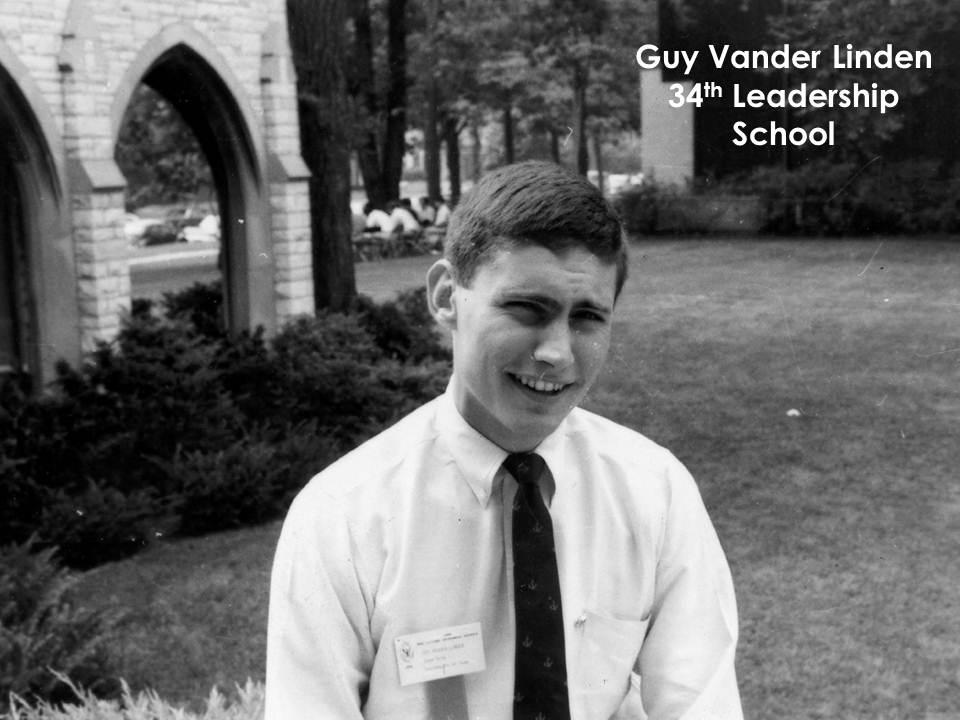
He said many of the issues that were at the forefront then were sessions on rush, pledging, the True Gentleman, singing and hazing.
Vander Linden said the turbulent years in the later 1960s and the Vietnam War negatively impacted the Iowa Beta chapter.
“I think that when I got there fraternities had kind of reached their zenith,” he said.
“The war had started, but it was not yet on everybody’s radar. We had already lost two brothers by the time I had arrived.”
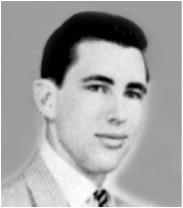
LTJG Jim Hise (IABE ’63), a navy pilot, was killed on March 25,1967 as he was returning from a mission and landed on the U.S.S. Hancock. The arresting gear broke as he landed on the carrier. He attempted a takeoff but the plane lost power and he ejected. He was not high enough to permit his parachute to open. Jim landed in the water and the aircraft carrier passed right over him. His body was never recovered.

LT Carl Harris (IABE ’66), an Iowa Hawkeye football player who became a tank commander with the 11th Armored Cavalry, was killed in battle on January 12, 1968 by a grenade explosion in Tay Ninh. It was just six weeks after his wedding day.
“As time went on, the war started to become more and more of a focal point on campus. I can remember that John Blackman (IABE '68) and Jim Swift (IABE ’68), who were brothers ahead of me, had joined the Marines.
“There was a demonstration over at the Student Union against the Marine recruiter. The demonstrators had blocked the steps there. The three of us went to go and counter the blockage. There was a picture of this melee on the front page of The Daily Iowan. That was kind of the beginning with the problems of Vietnam as I recall.
“It seemed after all the student unrest, fraternities were not as popular as they had been in the 50s or early 60s but the SAE house struggled along. We weren’t thriving but we weren’t dying either.”
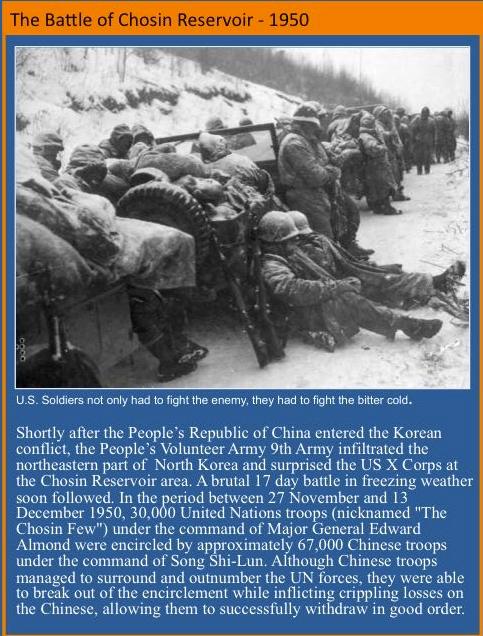
Vander Linden’s path to the Marines started innocently at a young age. His uncle, Guy Ferree, fought at the Battle of Chosin Reservoir in Korea and often visited the Vander Linden household.
“When he came over, it was like you were playing with Mickey Mantle,” Vander Linden said. “So from a young age I started thinking that if I ever go into the military, the Marines were the way to go. I heard and read about the Marines growing up…I guess I fell for the whole line!”
On graduation day from Iowa, Vander Linden was commissioned as a second lieutenant. He was then sent to a basic school of infantry officer training for six months at Quantico.
Officers who moved on to another branch beyond infantry were given further training. Vander Linden went to three months of artillery training at Fort Sill. After about a year’s training following his Iowa graduation, he made it to the fleet Marine Corps.
Vander Linden faced a cross roads in three years into his career in 1973 as a first lieutenant. He could get out of the military or take an assignment in Okinawa with his family for a year or go to flight school at Pensacola, Fla. He chose the latter. By this time, the Vietnam War had ended.
He joined Marine Helicopter Squadron One as the operations officer. The unit is responsible for the helicopters seen on the White House lawn. At that time, there were four White House Command pilots, who had the authority to fly as an aircraft commander with the president aboard. Vander Linden was one of those four who had multiple opportunities to fly President Reagan and Vice President Bush.
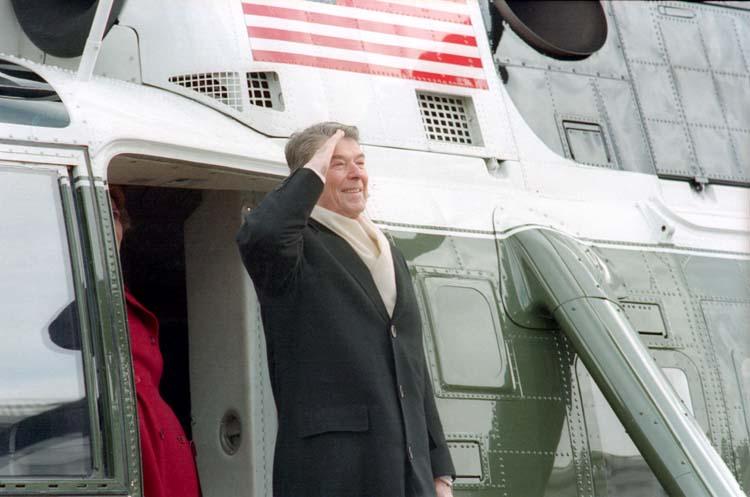
"It’s an honor to fly these men but you have to remember that your butt is strapped to this aircraft too,” Vander Linden said.“It’s always important in aviation that your landings match the same number of take offs. There were times when I remember flying to the ranch at night and I thought, ‘Man, this is a pretty big deal.’ ”
Reagan and his party would fly from the White House to Andrews Air Force base in a helicopter, Marine One, then fly in Air Force One to Point Mugu Naval Air Station. The Presidential party would then deboard Air Force One and board a helicopter in position and make the last leg of the journey to Rancho del Cielo, the Reagan’s vacation home.
Vander Linden commanded a helicopter squadron during the first Gulf War (Operation Desert Storm). He entered the conflict as Lieutenant Colonel, stationed at El Toro, Calif.
“I had right at 20 years of service and was in command of a helicopter squadron, which was really what I thought was going to be the peak of my career. I wanted to get this point, but I did not have ambitions beyond that.”
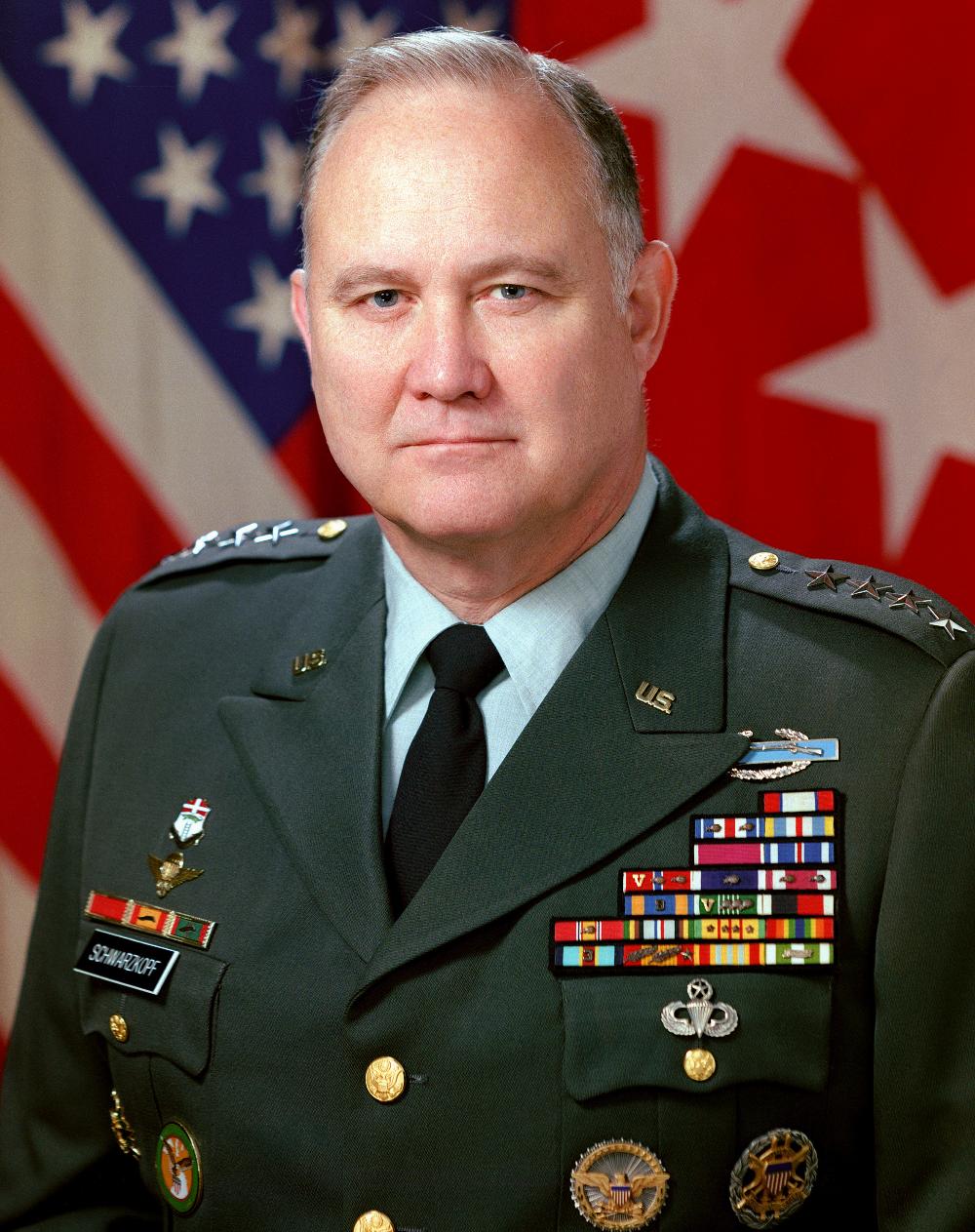
He was assigned to a 6-month training deployment aboard a ship that was going to sail to Hong Kong, Thailand and Australia. When the boat got to the Philippines, the situation in Iraq had escalated as Saddam Hussein’s forces had marched into Kuwait. The boat was redirected to the Indian Ocean and the Arabian Gulf.
The ship was ordered to perform a faint, which meant that the ship headed to shore to appear that the Marines would be the first to land. The idea was to draw enemy defenses toward the vessel. The faint worked while General Norman Schwarzkopf performed his famous left hook strategy where his VII Corps and XVIII Airborne Corps on the left flank cut off the Iraqi forces from the west.
Vander Linden’s men flew several missions.
“One time we flew in the night to do a fake landing to confuse the enemy but there was plenty of stuff flying around the air,” he said. “And the rest of the missions were primarily to pick up prisoners. The Iraqis were surrendering in hoards and we had to transport them.
“My biggest memory was probably my saddest. We had two helicopters collide and all eight members were killed. Both aircraft sank in 11,000 feet of water over the Indian Ocean so we never found anything. That happened on Oct. 8th 24 years ago and it is something that just sticks in my mind.”
The experience was taxing both physically and mentally.
“After the war was over, everyone flew home, except us because we had to take the ship back to the States, which took another six weeks,” he said. “What started as a 6-month cruise, turned out to be a 10-month cruise and that is a long time to be aboard ship.”
Vander Linden was promoted to a full colonel in command of the Naval Aviation Depot in Cherry Point, N.C., after attending the War College. This is where airplanes are overhauled and reworked. When he was selected for Brigadier General, he had not had a joint tour with either another service or with joint staff. He was sent to Naples, Italy for two years to participate in a NATO command and his family was able to accompany him.
He finished his career in the Pentagon where he was Deputy Assistant Commandant for Plans and Programs.

“We were in the business of acquisitions…what kind of materials and systems did the Marine Corps need,” he said. “You go to battle with the other services over whose toys are more important. I attended a lot of conferences, presentations and interminable PowerPoint presentations and briefings. It was not my favorite tour.”
In 2000, it was time to retire.
“Senior military officers get to the point where if they had the same amount of responsibility in civilian life, you would be making a hell of a lot more money,” he said. “And really, that is true all the way up the ranks. So if you had a family, you were way behind your peers financially. The higher you go on the pyramid, the fewer good deals there are. If you are not in command as a colonel or a general… all other jobs are pretty much undesirable.
“I was in the Pentagon, which I had managed to avoid my entire career and I knew I was never going back to a flying billet. It had been great but the ride was over. I need to do something on the outside. The Marines were everything that they were cracked up to be and I was proud to serve.”

Throughout his military service, Vander Linden was the recipient of many awards and honors that were bestowed upon him, including the Legion of Merit, U.S. Marines, for exceptionally meritorious conduct in the performance of outstanding services to the Government of the U.S.; Air Medal (two awards), U.S. Marines; Navy and Marine Corps Commendation Award, U.S. Navy and U.S. Marine Corp; and the Combat Action Medal, U.S. Marine Corps.
After retiring from military service Vander Linden entered the private sector, becoming the vice president of Agusta Westland, Inc. and subsequently for the defense division of Rolls-Royce North America. Additionally, he became involved with several nonprofit organizations in Oskaloosa, serving as a volunteer for Habitat for Humanity, the Y’s Men’s Club, and Trees Forever.
Vander Linden lives in Oskaloosa and is the proud father of two daughters and a son. He recently became a new grandfather.
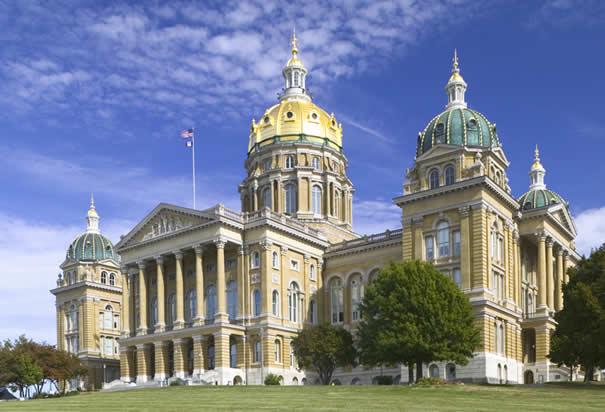
Currently, Vander Linden serves the people of Oskaloosa as a member of the Iowa House of Representatives, representing District 79.
A Republican, he was first elected in 2010, won reelection in 2012 and was unopposed in the 2014 general election.
He serves as Member, Commerce Committee; Chair, State Government Committee; Member, Subcommittee on Administration and Regulation (Joint Appropriations); and Member, Ways and Means Committee.
“State government is a constant balancing act of needs,” said Vander Linden. “When I came into office, the state had a $900 million deficit. I have been with a group of legislators who agreed that the state needed to stop spending too much money. We have worked to turn the state budget into a $900 million surplus. And I am pretty proud of that.”
Vander Linden, a proud member of the Iowa Beta Alumni Association, said he looks forward to SAE returning to campus in 2016.
“I think there is an opportunity for SAE to do some really good work in Iowa City,” he said. “When I came out of a small town as an 18-year-old kid, I pretty much knew everything there was to know. Then I got to Iowa and found out, well…maybe not quite so much.
“I learned a lot from my fraternity brothers. And you even get to watch some knuckleheads show you that they are something you never want to grow up to be! But most of the brothers added to my growth and my character," said Vander Linden. "I really want to see this opportunity for our future young men because I think they will benefit.”
Defenders of Freedom: Everyone plays a role
By Shawn Mingus (IABE '90)
In my years in the military, I have met people who have taught and inspired me to take action. And it is important that I share with you the fact that we each have a role to play. We live in a nation where freedom is our lifeblood; it’s the pivotal human commandment that allows each of us to live our lives as The True Gentlemen.
I come from a long line of veterans, including my father, who has 27 years of service, and my older brother, Brigadier General James Mingus, who currently serves. Additionally, two Iowa Beta SAE veterans are in my family: my father-in-law Jim Nordyke (IABE ’56) and my uncle-in-law Tom Nordyke (IABE ’61). Tom, the younger brother, flew helicopters for the Army in Vietnam in the early 60s. Jim served in the Army from 1957 to 1959.
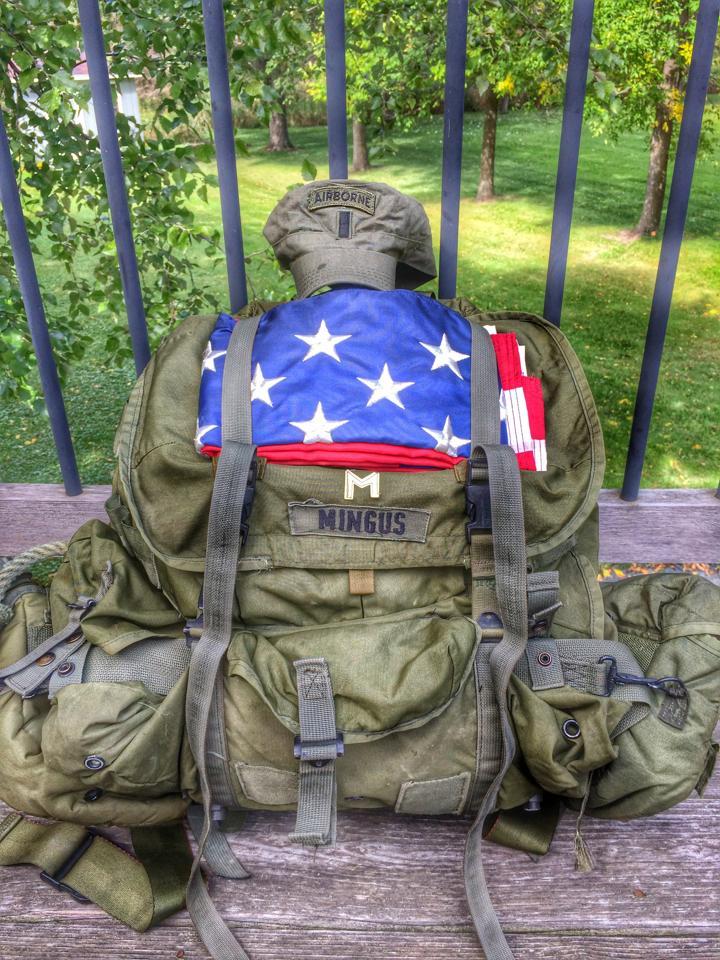
Since 2009, I have been involved with several projects in support of our deployed veterans. In 2010, with the aid of a healthy board of directors, I founded a 501(c)(3) that supported veterans serving in Afghanistan. It's called Rapport Afghanistan, a grass roots effort that has collected 16,000 pounds of warm coats, hats and gloves and delivered them to civilians in Afghanistan in early 2011.
My friend, Commander Steve Boesen, an ROTC cadet that I befriended while I was at the University of Iowa, was the recipient of these comfort items in 2011. He used them to distribute good will and build rapport with local villages under his command in eastern Afghanistan. Boesen stated, upon his return as commander of the Iowa National Guard Combat Battalion, 1-168, that it was "efforts like Rapport Afghanistan that saved American lives." Boesen's unit received one-third fewer IED strikes than the unit prior to 1-168.
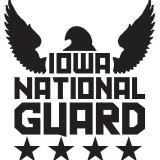
I am very proud that so many of my SAE brothers participated in the fundraising and coat donations and I thank you. In particular, I would like to comment brothers Roger Hudson (IABE '88), Matt Penar (IABE '93) and Paul Kim (IABE '90) for being so vocal in their support of this cause.
In 2012, when my older brother deployed, Rapport Afghanistan had $10,000 remaining from donations. Using these funds we purchased 200 Sawyer water filters that my brother’s unit, 4 th Brigade, 4 th Infantry Division, distributed in remote areas of Afghanistan.
These filters are now providing potable water for nearly 20,000 people for the next 20 years. In talking with LTC Newton who was personally involved in the distribution, he indicated many would be drinking clean water for the first time in their lives. Newton said this effort went a long way in helping connect the poorer remote villages to their government. To accomplish such a delicate task without making the poor man conscious of his poverty, Newton and his team were acting in the spirit of The True Gentleman.
Looking back to my days at Iowa Beta, from the moment I met brother Marcus Miller (IABE ’91) I knew we had much in common. I pledged SAE because of Marcus and many others like him whose conduct proceeds from good will and an acute sense of propriety. As a pledge and eventually active member, I brought leadership experience gained from serving in the armed forces. By the same token, my time with the fraternity birthed leadership experience which I used in the military.
My father-in-law speaks fondly of his days at Iowa Beta and the lifelong friendships he made. According to Jim, the SAEs were strong both academically and athletically during his time on campus. It was a time when captains of industry and great military leaders were forged.
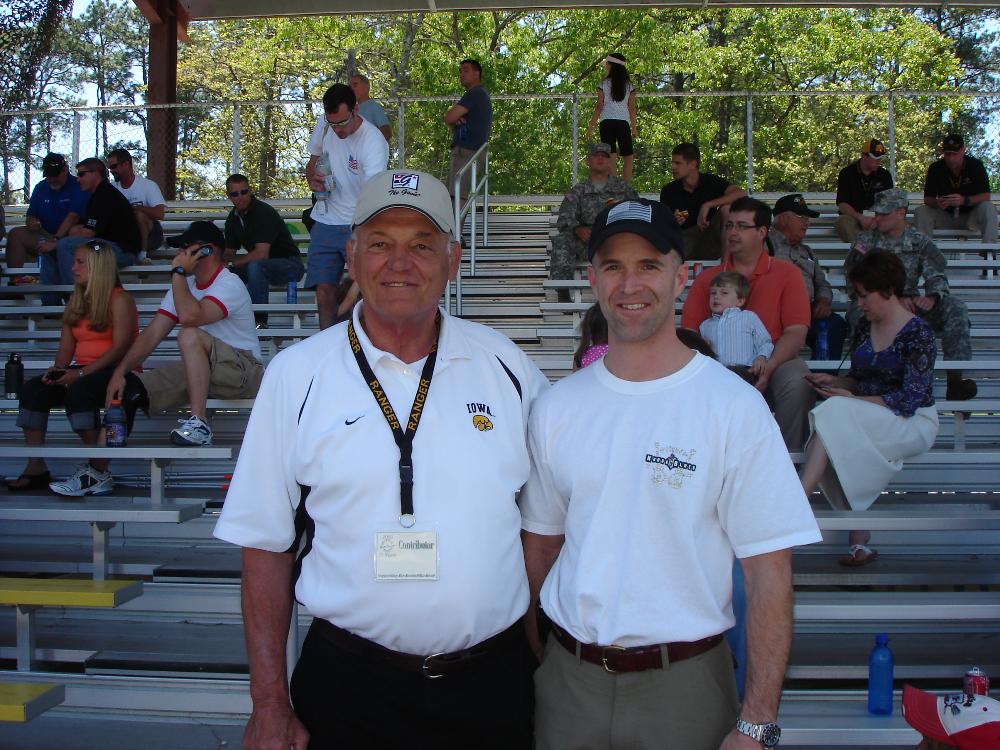
One great leader in particular was Major General Kenneth Leuer (IABE ’56). I had the honor of meeting Leuer at The Best Ranger competition at Fort Benning, GA. My older brother Jim, the former Commander of the Ranger School, invited me as his guest.
It was April 2008 and the competitors were finishing up from several days of the most intense endurance competition in the world. As the finalists of The Best Ranger were conducting a dangerous helicopter waterborne operation in front of a crowd of onlookers, I noticed Leuer was cheering them on to the end. I was touched to see one of the most significant Ranger figures supporting the next generation of elite warriors.
To further highlight the significance of this point it’s important to note Leuer’s legacy. He was Commander of the first Ranger battalion-sized unit formed since World War II and his name hangs in the coveted Ranger Hall of Fame. What a role model General Leuer was for me that day. I chuckle a bit when I look back at this picture and remember he’s wearing an Iowa Hawkeye shirt.
And so we are one and all, defenders of freedom. And as such we each play a role; one role could be keeping our economy vibrant by creating value in the private sector, another could be protecting the people by serving in the medical and law enforcement professions, or serving in the armed forces.
But regardless of which, our fundamental role should be to support those who carry the freedom-torch into battle. Leuer demonstrated this in April 2008 as he supported active veterans by showing up and encouraging them to give their very best! Leuer proved
he is himself humbled if necessity compels him to humble another. I say a big Phi Alpha to that moment!
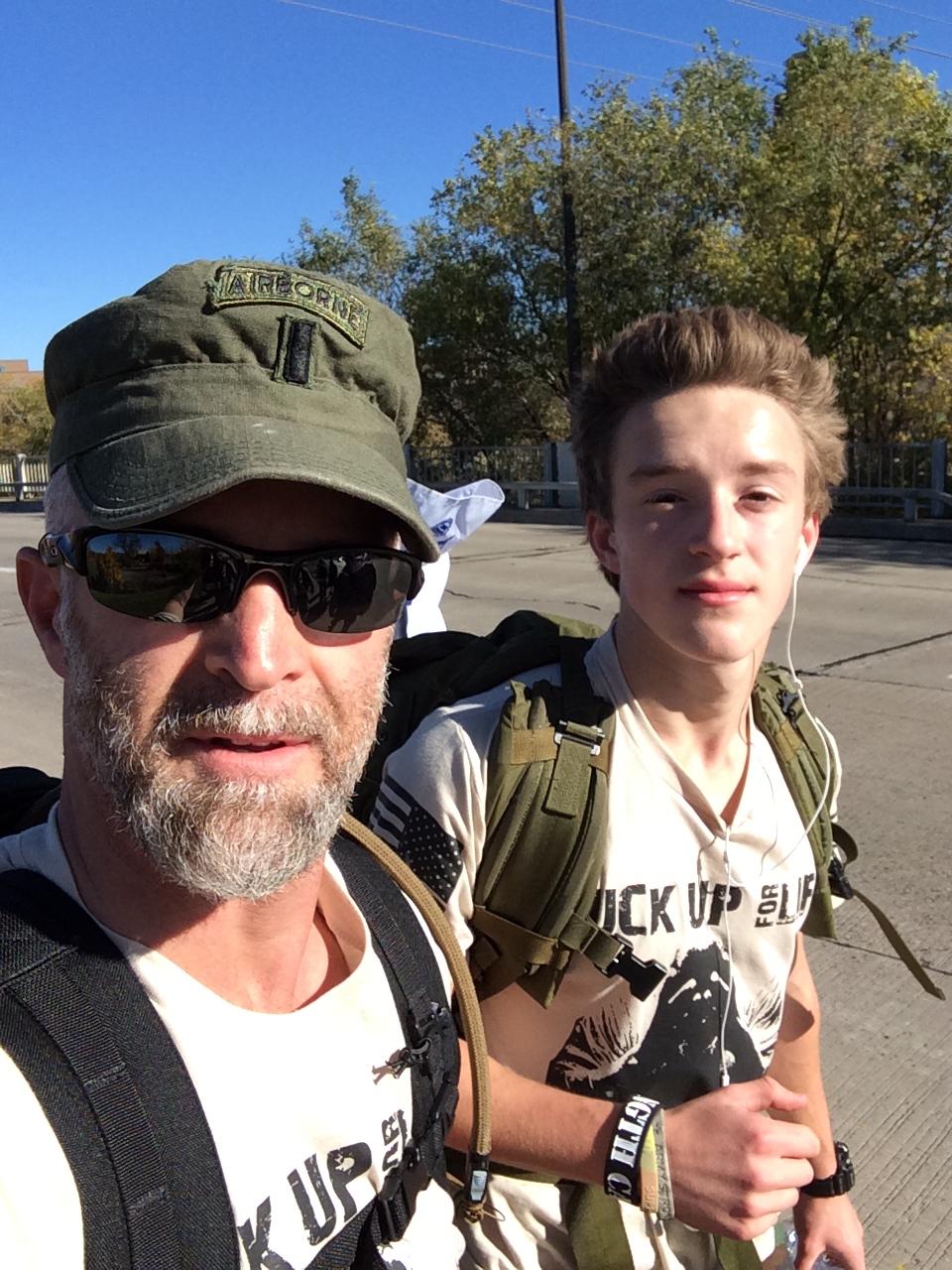
Michael has volunteered to join the elite Army Rangers and will play a role I support with a heavy heart. He too lives the life of The True Gentlemen; a man with whom honor is sacred and virtue safe; Michael is passionate about eliminating the evil that is trying to engulf our world.
In honor of Veteran's Day please remember to thank our veterans. As a friendly reminder, Memorial Day is to honor our fallen. And so Veterans Day is for celebrating all the people who’ve served in the armed forces.
As defenders of freedom we know we make a difference, but only when we take action beyond these two days of the year. I ask you brothers to commit to giving more as many already do. Thank you and please engage today!
QUIZ ANSWER: A. Eighty-one Iowa Beta brothers enlisted
World War I was one of the deadliest and most brutal wars ever to be fought. More than 9 million soldiers and 7 million civilians died in the war that waged for four years, three months and one week.
The war began as a result of the assassination of Austrian Archduke Franz Ferdinand and his wife by Yugoslav nationalists in Sarajevo on June 28, 1914.
Franz Ferdinand was the heir presumptive to the Austrian throne. Austria-Hungary had annexed Bosnia and Herzegovina in 1908. Sarajevo was the capitol of the Bosnian province. The Austrian royals were in Sarajevo that fateful day visiting troops.
A failed assassination attempt earlier in the day by a hand-thrown bomb resulted in serious injuries to 20 people, but the Archduke and his wife were not hurt. However, subsequently, as they were on their way to the hospital to visit the injured, they were ambushed with both being shot and killed.
Austria-Hungary blamed the Kingdom of Serbia for these murders and ultimately declared war on the nation. Because of a complicated web of treaties and alliances among the great military and economic powers of the day, a global war started to ensue. One month to the day after the assassinations, The Great War, as it was subsequently known, began.
The war was mostly -- but not entirely -- fought in Continental Europe. It pitted the Central Powers on one side (countries involved included Austria-Hungary, the German empire and the Ottoman Empire) and the Allied Powers on the other (countries involved included Russia, the British Empire, France, Italy and Japan.)
Germany adopted a policy of unrestricted submarine warfare, which included the downing of civilian ships, as it attempted to cut the supply lines between North America and Britain. This was a source of tremendous friction between the United States and Germany.
However, the U.S. was officially neutral and did not enter the war until April 6, 1917, after it was discovered that Germany was trying to encourage Mexico to join the Central Powers and to invade Texas, Arizona and New Mexico; and after Germany sunk seven additional U.S. merchant ships. This was the last straw. Congress declared war and the U.S. joined the Allied Powers. Hundreds of thousands of Americans enlisted in the effort.
The Central Powers were defeated and World War I officially ended on November 11, 1918.
The eighty-one Iowa Beta brothers who enlisted to serve their country in the war were:
| Aurner, Robert R. | Hanson, Walter R. | O'Brien, Willis J. |
| Barlow, Howard H. | Harrison, W. Don | Parsons, Harry C. |
| Barnett, George | Hotz, Edwin J. | Patrick, Walden W. |
| Barngrover, Walter | Hotz, Harlan G. | Peck, John H. |
| Barrett, Fred E. | Hotz, Robert H. | Powell, Lester D. |
| Beem, Cassius C. | Hovey, Glenn G. | Powers, John L., Jr. |
| Bennett, Ward F. | Hull, Albert F. | Poyneer, Frederick J. |
| Boynton, Douglas F. | Humphrey, Rollin W. | Proctor, Rothwell D. |
| Brierly, Hubert H. | Hurlburt, William B. | Ramser, Howard W. |
| Bussey, John G. | Irish, Thomas J. | Raymond, Everett M. |
| Case, Sumner B. | Jensen, Pierce A. | Reams, Harry L. |
| Colegrove, Paul C. | Johnson, J. Hamilton | Rigler, George H. |
| Collins, Ben P. | Knox, Carl B. | Riley, Byron G. |
| Dahl, Harry W. | Kuever, Rudolph A. | Riley, William F. |
| Day, Wilbur J. | Langdon, Charles F. | Schneck, Perle W. |
| Dickey, Clarence H. | Lauder, Clark H. | Shrader, Edwin G. |
| Diddy, Keith W. | Laurer, Eugene B. | Spangler, Ronald T. |
| Ellingson, Victor H. | Lemmon, Glenn R. | Statler, Henry W. |
| Foarde, John J. | Lierle, Dean M. | Thomas, Floyd E. |
| Fortney, Rufus L. | Long, Homer D. | Veblen, Elling H. |
| Foster, Harry W. | McConnell, Joseph J., Jr. | Wallace, Arthur T. |
| Gill, Franklin E. | Malloy, Harry E. | Weeks, Elbert W., Jr. |
| Goeppinger, Julius L. | Marshall, Clare R. | Weis, Alfred D. |
| Grant, Harry A. | Martin, Carroll B. | Willets, Henry M. |
| Hamilton, Clarence E. | Meek, Stanley R. | Wilson, Arlo |
| Hamilton, Ernest C. | Myers, Walter L. | Wolverton, Ben F. |
| Hammer, William H. | Nye, William E. | Zimmerman, Arthur A. |
Did you know?
The Peace Chapel at the Levere Memorial Temple, in Evanston, IL, is dedicated to the memory of those SAE brothers who paid the ultimate sacrifice in times of war to protect our freedom, but it also honors all of SAE's veteran brothers from the Civil War to the present day.
The 250 seat Gothic chapel houses a priceless collection of stained glass windows by the renowned Tiffany Studios of New York.
The first floor windows depict pivotal moments in SAE history along one side of the chapel while the windows on the other side commemorate SAEs serving in battle from World War II through the Persian Gulf conflicts. The second floor windows depict the history of North America.
The buttresses, which support the interior roof, feature carved wooden finials depicting all branches of military service from the Civil War through World War I. Memorials listing SAE’s fallen by conflict line the walls of the chapel.
The great "Peace Window" above the altar features the motif of Christ reuniting the North and South in peace at the conclusion of the Civil War.
The chapel also contains floor to ceiling murals and fresco-secco embellishment painted directly on the plaster walls.
The Levere Memorial Temple, which houses the fraternity offices, a library, a museum, and the Peace Chapel, was dedicated on December 28,1930.
Fraternity joins fight
to end sexual assault
to end sexual assault
On September 19, 2014, President Obama launched the "It's On Us" initiative; an awareness campaign to help put an end to sexual assaults on college campuses.
Sigma Alpha Epsilon, the nation's preeminent fraternity, has joined the fight.
The It's On Us campaign asks everyone -- men and women alike -- to make a personal commitment to be a part of the solution.
In particular:
- To recognize that non-consensual sex is sexual assault.
- To identify situations in which sexual assault may occur.
- To intervene in situations where consent has not or cannot be given.
- To create an environment in which sexual assault is unacceptable and survivors are supported.
Alan Fischer appointed Foster Region Director For governance purposes, SAE divides its realm into regions and the regions are comprised of various provinces.
The Iowa Beta chapter is located within SAE's Province Tau, which is a part of the Foster Region.
Sigma Alpha Epsilon is pleased to announce the appointment of a new director for the Foster Region. Alan Fischer (Kansas '12) has recently joined the Fraternity Service Center team.
Fischer graduated with a bachelor’s degree in political science with minors in business and psychology. He served his chapter as Eminent Archon and Eminent Warden. In addition, he held leadership roles on campus as IFC Vice President and Peer Leadership Consultant and served on the Athletic Advisory Board.
During his time at the University of Kansas, Fischer founded the school’s Hazing Prevention Task Force and volunteered for the Douglas County Parks and Recreation Department as a mentor for seventh- and eighth-grade students.
Join Iowa Beta, the best of the best
Do you want to be part of a winning tradition?
The Iowa Beta Alumni Association was named the best in the nation in two categories for its efforts in communication at the Sigma Alpha Epsilon 79th Leadership School.
The top honors taken are the Outstanding Alumni Association/House Corporation Communication Award: Electronic and the Outstanding Alumni Association / House Corporation Communication Website award. Iowa Beta beat out the Greater Atlanta Alumni Association in former category and topped the Greater Kansas City Alumni Association in the latter category.
In addition, Iowa Beta was named the runner-up for the Outstanding Chapter Alumni Association Award.
The Iowa Beta Alumni Association is the second largest SAE alumni group in the country and its programs and initiatives are recognized as among the very best in the SAE realm.
If you are an alumnus of Sigma Alpha Epsilon who was affiliated with the University of Iowa, we'd like you to join our ranks.
Membership is free. All you have to do is:
Iowa listed as the 8th best tailgate experience
USA Today's College Football Fan Index listed The University of Iowa tailgating experience as the eighth best in the country.
Of all the delicious meats available on Saturdays in Iowa City, perhaps none is more famous than the "Big Ass Turkey Leg", which looks like something Fred Flintstone might consume after a long day at the quarry. The BATL is the brainchild of Chuck Jones, who reportedly came up with the idea of peddling a monstrous hunk of poultry while attending Renaissance fair in Wisconsin.
However, the SAEs who attended the Nov. 1 SAE tailgate before the Iowa vs. Northwester game quickly learned that brother Don Keeley (IABE '88) makes the best pulled pork sandwiches in the land and his Uncle Dougie wings are Kinnick famous!
And if a bloody mary is what you thirst for then Iowa Beta Alumni President Marc Rosenow's Bloody Bar is second to none!
"The tailgate was a great success and featured alumni and their families, including some future Iowa Beta SAEs," Rosenow said. "We thank Don Keeley for his outstanding efforts as the event chairman."
Other Big Ten schools ranked in the tailgate list are Penn State (5), Wisconsin (7) and Nebraska (10). Who was ranked No. 1? LSU.
Support the Iowa Beta
Alumni Association
The Iowa Beta Alumni Association is recognized by the IRS as a Section 501(c)(3) nonprofit organization and your charitable contribution is tax-deductible for federal income tax purposes to the fullest extent of the law.
As you think about year-end giving opportunities, please consider a small gift to help support our programs and initiatives.
Thank you and Phi Alpha!
